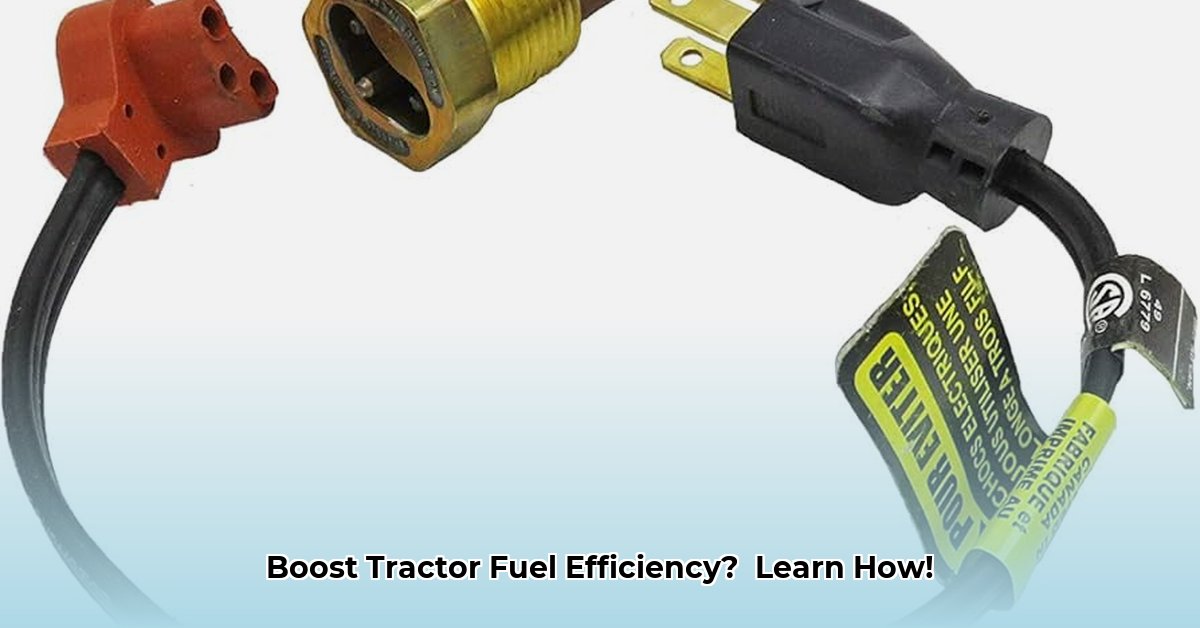
Coolant Heaters for Tractors: Saving Fuel, Saving the Planet, and Saving Money
Farmers face increasing pressure from rising fuel costs and environmental concerns. Coolant heaters offer a practical solution, promising significant fuel savings and a reduced environmental footprint. This article explores the benefits, implementation, and cost-effectiveness of incorporating coolant heaters into sustainable farming practices. It provides a step-by-step guide to help you determine if this technology is right for your farm. For more information on diesel fuel efficiency, check out this helpful resource: Diesel Fuel Info.
Understanding Coolant Heaters and Their Role in Sustainable Agriculture
Starting a cold tractor engine is notoriously inefficient. Cold engines burn significantly more fuel during the warm-up period, contributing to higher operating costs and increased greenhouse gas emissions. A coolant heater pre-heats the engine's coolant, allowing for a smoother, more efficient start. This translates directly to lower fuel consumption and reduced emissions, contributing to a more sustainable operation. Isn't reduced fuel consumption exactly what every farmer strives for?
How Coolant Heaters Boost Tractor Efficiency
Coolant heaters offer several key advantages:
Reduced Engine Wear: Cold starts subject engine components to excessive stress. Pre-heating minimizes this stress, extending engine lifespan and reducing the need for costly repairs. "Think of it as giving your tractor a daily warm-up before a big workout," says Dr. Emily Carter, Agricultural Engineering Professor at Purdue University.
Improved Engine Performance: A warmed-up engine runs more efficiently, converting fuel into usable power more effectively. This leads to increased productivity and reduced fuel wastage.
Environmental Responsibility: By lowering fuel consumption, coolant heaters significantly reduce greenhouse gas emissions, aligning your farm practices with sustainability goals. "Lowering emissions is not only environmentally responsible, it's becoming increasingly vital for securing future farm subsidies and grants," adds Michael Davies, Sustainability Consultant at AgriSolutions Group.
Evaluating and Implementing Coolant Heaters – A Step-by-Step Guide
Implementing coolant heaters effectively requires a structured approach:
Baseline Fuel Consumption: Meticulously track your tractor's fuel usage for several weeks to establish a baseline. Note operating conditions (temperature, workload) for accurate comparison.
Pilot Program: Begin by installing a heater on one or two tractors. This allows for a controlled evaluation of its effectiveness and cost-savings before a full-scale implementation. "A small-scale trial is crucial to avoid costly mistakes and ensure compatibility with your specific tractor models," notes John Miller, Farm Operations Manager at Miller Family Farms.
Cost-Benefit Analysis: Compare the heater's initial cost against projected fuel savings. Factor in electricity costs (if applicable) and potential maintenance expenses. Calculate the return on investment (ROI) to determine the financial feasibility.
Power Source Selection: Prioritize renewable energy sources, like solar power, to minimize the heater's environmental impact. Using renewable energy further emphasizes your commitment to sustainable farming practices.
Long-Term Strategy: Integrate coolant heater usage into a wider sustainability plan. This holistic approach may include other efficiency measures, optimizing your farm's overall environmental performance.
Weighing the Pros and Cons – Making an Informed Decision
While coolant heaters offer many benefits, it's important to evaluate potential drawbacks:
| Advantages | Disadvantages |
|---|---|
| Significant fuel savings and lower operating costs | Higher initial purchase price |
| Less engine wear and tear, extending its life | Potential need for maintenance and repairs |
| Reduced greenhouse gas emissions | Requires a reliable electrical power supply |
| Improved engine performance and reliability | May involve professional installation |
| Increased profitability | Possible compatibility issues with certain tractors |
Boosting Tractor Fuel Efficiency with Coolant Heaters: How to Calculate Fuel Savings
Key Takeaways:
- Coolant heaters reduce cold-start fuel consumption significantly.
- Reduced fuel consumption translates to substantial cost savings and a smaller carbon footprint.
- Accurate fuel savings calculations require precise pre- and post-installation data.
- A thorough cost-benefit analysis is essential for informed decision-making.
- Regular maintenance ensures optimal heater performance and maximizes fuel savings.
How to Calculate Tractor Fuel Savings Using Engine Pre-heaters
Follow these steps for accurate fuel savings calculations:
Baseline Data: Record fuel consumption (gallons per hour) over a representative period before heater installation. Maintain detailed records of operating conditions.
Post-Installation Monitoring: After installation, monitor fuel consumption for a similar period. Maintain consistent operating conditions for accurate comparison.
Data Comparison: Subtract post-installation fuel consumption from baseline consumption. The difference represents the fuel saved per hour.
Cost-Benefit Analysis: Calculate the overall cost savings by multiplying your hourly fuel savings by the average hours of tractor operation per week or month. Compare these savings to the heater's cost and maintenance expenses.
Long-Term Tracking: Continue tracking fuel usage to account for seasonal variations and get a comprehensive understanding of long-term savings.
Example Calculation
If your tractor previously consumed 12 gallons per hour and now consumes 9 gallons per hour, you're saving 3 gallons per hour. For 20 hours of weekly operation, this translates to a weekly saving of 60 gallons. At $5 per gallon, this represents a weekly cost saving of $300.
Beyond Fuel Savings: Environmental Benefits
Beyond the economic advantages, coolant heaters contribute to a greener agricultural approach by significantly lowering greenhouse gas emissions. This aligns with the growing demand for environmentally responsible farming practices. Investing in a coolant heater is an investment in both your farm's profitability and its sustainability.